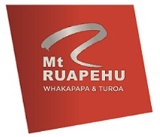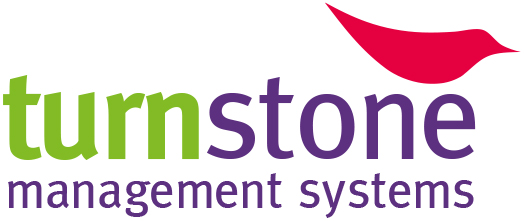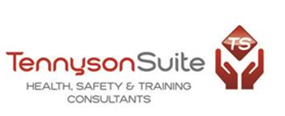Information
-
Employer name:
-
Audit date(s)
-
Initial audit or Renewal audit
-
We include the following disclaimer in the introduction to the audit standards.
"Conformance to the programme standards set out in the audit tool should not be relied on to satisfy compliance with legal and other obligations of the employer. It is the responsibility of the individual employer to be satisfied that these legal and other obligations are met."
Within the standard there are three measurable levels of performance:
PRIMARY = Programme entry level requirements [Dark grey shading]
SECONDARY = Consolidation of good practice [Light grey shading]
TERTIARY = Continuous improvement, best practice framework [White shading]
Independent audit summary
Independent audit summary
-
Name of company or organisation:
-
Contact person:
-
Telephone:
-
E-mail:
-
Date(s) of audit:
-
Audit completion date:
-
Location(s) of audit:
Summary of workplace information:
Auditor Details
-
Name:
-
Address:
-
Phone:
-
E-mail:
-
Auditor signature:
-
Date:
Summary of results
Summary of results Safety Management Practices:
-
1. Employer commitment to safety management practices
-
2. Planning, review and evaluation
-
3. Hazard identification assessment and management
-
4. Information, training and supervision
-
5. Incident and injury reporting, recording and investigation
-
6. Employee participation in health and safety management
-
7. Emergency planning and readiness
-
8. Protection of employees from on-site work undertaken by contractors and subcontractors
-
9. Workplace Observation
-
10. Focus Group Interviews
-
Number of focus groups:
-
Overall result
CE 1. PCBU commitment to safety management systems.
Critical element 1. Employer commitment to safety management systems.
-
Objective:
The PCBU (employer) is able to demonstrate an active, consultative commitment to all areas of health and safety management in the workplace.
1.1. There is a documented health and safety policy.
-
1.1.1.P Policy document.
1.2. The policy is authorised by current CEO, senior management, and board of directors (if applicable)
-
1.2.1.P Appropriate signature, position and date.
-
1.2.2.P Process for senior management to review policy document annually.
1.3 The policy incorporates management commitment to comply with relevant legislation, regulations, codes of practice and safe operating procedures.
-
1.3.1.P Policy statement includes statement of commitment to comply with relevant standards.
1.4. The policy includes specific understanding of management responsibilities for health and safety.
-
1.4.1.P Policy document includes management commitment to health and safety.
-
1.4.2.P Specific health and safety co-ordination roles are designated at senior management* level.
-
1.4.3.S Management positions are reviewed against the performance of designated health and safety responsibilities.
-
1.4.4.T Evidence that individual management performance has been reviewed against health and safety responsibilities.
1.5. The policy includes an outline of individual workers responsibilities for health and safety.
-
1.5.1.P Policy document states individual responsibilities for health and safety in the workplace.
1.6. There is commitment to consultation with union* and other nominated worker representatives* regarding participation in health and safety management.
-
1.6.1.P Policy document includes statement of support for worker consultation and participation.
1.7. There is specific management commitment to accurate reporting and recording of workplace incidents and injuries.
-
1.7.1.P Health and safety documents include a specific statement requiring accurate reporting and recording.
-
1.7.2.S Records of this requirement included in performance review of management roles.
1.8. There is commitment to continuous improvement in health and safety.
-
1.8.1.S Indicative statement in policy document.
-
1.8.2.S Evidence that a system exists for the review of health and safety-related policies by senior management* to ensure their ongoing effectiveness.
-
1.8.3.T Evidence of review of the safety management system on a biannual basis at a senior management level. (meeting minutes, documents)
-
1.8.4.T Evidence that excellence in health and safety management and innovation by staff is formally recognised (e.g. recognition in staff newsletter, reward for innovative ideas).
1.9. There is specific commitment to ensure managers (including senior management*) have an understanding of health and safety management relative to their positions.
-
1.9.1.T Evidence of this commitment in policy statements, position descriptions (or similar).
-
1.9.2.T Evidence that senior management* have been involved in health and safety (e.g. seminars, briefings, conferences, training sessions) within the previous two years.
1.10 There is specific commitment by management to support the safe and early return to work of their injured employees.
-
1.10.2.S Information provided to management staff on how to support safe and early return to work.
-
1.10.1.P Health and safety documents that include a statement of commitment.
-
1.10.3.T Evidence of management involvement in supporting safe and early return to work (where applicable).
-
Standard acheived:
-
Comments:
-
Critical issues:
-
Recommendations for improvement:
CE 2. Planning, review and evaluation.
Critical element 2. Planning, review and evaluation.
-
Objective: The PCBU is able to demonstrate a focus on continuous improvement through a systematic approach to occupational health and safety that includes setting specific objectives, establishing and supporting systems or programmes to achieve objectives, regular review of progress and evaluation of outcomes.
2.1 There is a process to ensure that health and safety management for the workplace is reviewed.
-
2.1.1P Process to review health and safety management biannually.
-
2.1.2T Process to review health and safety management that occurs after a critical event and/or if there is a change in work procedures or health and safety policy.
2.2 Health and safety objectives are set that are appropriate to the size of the business, relevant to each level within the business and related to identified hazards (where relevant). (NB: Objectives set should be 'SMART': Specific, Measurable, Achievable, Realistic, Time-bound.)
-
2.2.1P Documented objectives and management plan to achieve objectives.
-
2.2.2P Procedure to review objectives biannually.
-
2.2.3S Evidence that health and safety objectives have been reviewed. (and re-evaluated if necessary)
-
2.2.4T Evidence that senior management* and union* and other nominated employee representatives* have been included in annual review and setting of objectives.
-
2.2.5T Additional objectives and targets related to individual business functions and plans to achieve objectives.
2.3 There is an established consultative process to review and evaluate the effectiveness of hazard management.
-
2.3.1T Process or planning documents (or similar).
-
2.3.2T Minutes, schedules (or similar) to show there is annual review of the effectiveness of hazard management processes.
2.4 The PCBU is able to demonstrate knowledge of current health and safety-related information including legislation, regulations, current codes of practice, and other safety standards relevant to the particular workplace.
-
2.4.1S Process to identify the health and safety information specific to the employer's business.
-
2.4.2S Internal audit process in place to ensure compliance or conformance with relevant requirements.
-
2.4.3S Evidence of regular review to identify and accommodate any changes to requirements.
2.5 A procedure to undertake an annual self-assessment to ensure the programme audit standards can be met and maintained. The procedure involves management, union* and other nominated employee representatives*.
-
2.5.1P Self-assessment procedure.
-
2.5.2P Evidence that a self-assessment has been undertaken within the previous 12 months (may be immediately prior to initial entry audit).
-
Standard acheived:
-
Comments:
-
Critical issues:
-
Recommendations for improvement:
CE 3. Risk identification, assessment and management.
Critical element 3. Risk identification, assessment and management.
-
Objective: The PCBU has an active method that systematically identifies, assesses and manages the actual and potential Risks in the workplace, over which the PCBU has authority or influence.
3.1 There is a systematic procedure to identify and record actual and potential Risks in the workplace.
-
3.1.1P A procedure that covers an understanding of the range of Risks including (for example) work organisation, job design and risks facing employees working off-site.
-
3.1.2P Review of Risks to support process in action.
-
3.1.3S Records of regular review of the risk identification and recording process.
3.2 There is a process for Risk Assessment.
-
3.2.1P Process to demonstrate the identification of Risks and evidence of implementation of this process.
-
3.2.2P The Risk register (or similar) identifies which risks and the elimination or minimisation methods in place.
-
3.2.3P Procedure for developing appropriate controls.
-
3.2.4P Process for the issue, renewal and maintenance of safety equipment related to identified Risks including personal protective equipment.
3.3 There are appropriately trained and/or experienced people leading the identification and management of risks.
-
3.3.1P Records of training, and/or skills and experience for people leading risk management.
-
3.3.2T Evidence of ongoing training or increased experience for people leading risk management that has occurred within the previous two years.
3.4 There is a procedure for obtaining specialist advice for managing specific risks, where this competency is not available through internal staff.
-
3.4.1P Procedure to support the appropriate use of specialist advice (e.g. the management of hazardous substances, monitoring of noise levels or assessment of workstations).
-
3.4.2S Accessibility of reference information for all staff (e.g. hard copy or electronic) that includes relevant legislation, regulations, codes of practice, safe operating procedures, SDS, etc.
-
3.4.3S List of information about availability of internal or external health and safety specialist advice (where applicable).
3.5 There is a schedule documenting the minimum review timetable to monitor risks that have been minimised.
-
3.5.1S Risk review timetable appropriate for particular identified risks.
-
3.5.2S Responsibilities assigned for ensuring timetable is met and signed off each period.
3.6 There is active management of risks associated with any new or modified equipment, material, services or work processes introduced into the workplace.
-
3.6.1P Risk & Hazard identification and management documents.
-
3.6.2S A process for consultation with relevant health and safety personnel in the purchase or implementation of new or modified equipment, material, services or processes.
-
3.6.3T Evidence of health and safety issues incorporated into purchasing and design decisions (where applicable).
3.7 There is an ongoing opportunity for the active involvement of union* and other nominated worker representatives* in identifying and managing risks in the wokplace.
-
3.7.1P Evidence of employee consultation or active involvement in risk management, or the provision of ongoing opportunities for involvement (process document accepted for new applications).
3.8 There is a process to identify and manage any areas of the workplace requiring specific health monitoring in relation to tasks being undertaken (where applicable).
-
3.8.1P Process to identify tasks requiring monitoring and ongoing regular testing.
-
3.8.2P Process to undertake baseline monitoring of health related to identified tasks and to notify employees of results (e.g. hearing tests, lung function tests).
-
3.8.3S Process for post-critical event testing and exit testing.
-
3.8.4S Process to manage sub-optimal test results that includes consideration of individual medical and vocational needs.
-
3.8.5S Process to feed back sub-optimal results into hazard management.
3.9 Work areas over which the employer has control or influence are planned so that the exposure of visitors and the general public to workplace risk is minimised.
-
3.9.1P Clear marking of designated areas as appropriate.
-
3.9.2P Signage, security log books or visitors' registers are available as appropriate to specific areas of the workplace or escorting restrictions and induction for site visitors.
-
3.9.3P Evidence that emergency procedures are covered with site visitors.
-
3.9.4P Provision of appropriate personal protective equipment for visitors to the site (e.g. goggles, 'hi-viz.' vests).
-
Standard acheived:
-
Comments:
-
Critical issues:
-
Recommendations for improvement:
Risk management observation summary table
Risk management observation summary table Risks identified by the workplace:
-
Risk 1.
-
Method of control:
-
Details of control recorded by the workplace:
-
Auditor's observation of controls in place:
-
Risk 2.
-
Method of control:
-
Details of control recorded by the workplace:
-
Auditor's observation of controls in place:
-
Risk 3.
-
Method of control:
-
Details of control recorded by the workplace:
-
Auditor's observation of controls in place:
-
Risk 4.
-
Method of control:
-
Details of control recorded by the workplace:
-
Auditor's observation of controls in place:
-
Recommended outcome:<br>Overall it was observed at the time of the workplace review that the above identified significant hazards were being managed in accordance with the management systems documented in the workplace.
CE 4. Information, training and supervision.
Critical element 4. Information, training and supervision.
-
Objective: The PCBU will ensure that all workers are informed of their own responsibilities and the PCBU's responsibilities for health and safety in the workplace. The PCBU will ensure that workers have specific knowledge concerning management of the risks to which they are exposed through workplace procedures, environment, equipment and materials.
4.1 There is appropriate health and safety induction training for new workers and workers transferring to a new environment, role or task.
-
4.1.1P Evidence of staff health and safety induction training that includes consideration of the following needs (where appropriate):<br>- Emergency procedures<br>- Incident and injury reporting<br>- Hazard identification<br>- Employer and employee responsibilities<br>- The process for employee health and safety representation<br>- Information about the health and safety forum/s<br>- Designated roles for health and safety and rehabilitation<br>- Work injury claim process<br>- Rehabilitation responsibilities<br>- Use and maintenance of relevant health and safety equipment, including personal protective equipment (e.g. checklist, training information).
-
4.1.2P Signed workers induction training records (or similar individual verification).
4.2 There is identification of health and safety training needs in relation to risks associated with specific roles, tasks or areas of work.
-
4.2.1P Procedure to identify training needs for specific roles, tasks, or areas of work (e.g. training needs assessment or training plan linked to hazard management).
4.3 All health and safety information and training is delivered so that the key messages are clearly understood, taking into account language, literacy, vision, hearing or other variables.
-
4.3.1P A process to determine that health and safety information training has been understood.
-
4.3.2P Signed worker training records (or similar individual verification).
-
4.3.3P Evidence that task specific training has occurred (e.g. certification, training records or similar where applicable).
-
4.3.4S A process for 'bring-up' reminder facility for recurring training or certification requirements including assignment of responsibilities for this process.
-
4.3.5T Evidence to demonstrate that competency has been achieved following specific health and safety training (e.g. written or oral tests, certifications, practical skill demonstrations including on-the-job assessments).
4.4 There is access to internal staff members with the relevant skills, experience or qualifications to undertake training.
-
4.4.1P Guideline document (or similar) outlining health and safety trainer selection criteria.
-
4.4.2P Records of internal trainer's skills, experience or qualifications.
4.5 There is a process to determine the relevant skills, experience or qualifications of external trainers used for specific training requirements.
-
4.5.1S Selection criteria or similar for use of external trainers (where applicable).
4.6 There is a system for controlling health and safety-related documents and information including the dissemination of applicable information to staff and notification of outdated documents.
-
4.6.1S Document control system (paper based or electronic).
-
4.6.2S Dates on health and safety documents at operational sites.
-
4.6.3S Role-specific responsibilities to review health and safety documentation control.
4.7 Health and safety information specific to the workplace is available to all workers.
-
4.7.1P Access to further information is included in health and safety information available in the workplace (e.g. posters, signs, training, intranet, briefings, meeting schedules or similar).
4.8 Supervision for workers undergoing on-the-job training is provided by experienced and skilled staff to ensure the worker's newness to the task or role does not endanger themselves, others or equipment.
-
4.8.1P A process that requires assessment of relevant experience and skills for the supervision of workers undergoing on-the-job training.
-
4.8.2P A process for the clear designation of responsibility for supervision of new workers.
-
Standard acheived:
-
Comments:
-
Critical issues:
-
Recommendations for improvement:
CE 5. Incident and injury reporting,recording and investigation.
Critical element 5. Incident and injury reporting, recording and investigation.
-
Objective: The PCBU has an active reporting, recording and investigation system that ensures incidents and injuries are reported and recorded, and the appropriate investigation and corrective actions are taken. The terms incidents and injuries in this context include all 'near miss' or 'near hit' events, work-related illnesses and injuries and injury events that harmed or might have harmed any employee during the course of their work.
5.1 There is a system for reporting, recording and analysing incidents, injuries and work-related illnesses.
-
5.1.1P Documented procedure.
-
5.1.2P Incident and injury (accident) reporting forms.
-
5.1.3P On-site incident and injury (accident) registers.
-
5.1.4P Procedures requiring early and prompt attention to all reported incidents and injuries.
-
5.1.5P Collation of all injury and incident data into a central record for analysis.
5.2 Workers understand their specific responsibilities to report incidents, injuries and workplace illnesses that have or might have harmed anyone in the workplace.
-
5.2.1P Reporting systems available in all work areas (e.g. forms in hard copy or online).
-
5.2.2P Staff communications, team briefings, health and safety meeting minutes.
-
5.2.3P Examples of completed incident and injury reports (where applicable).
5.3 When a Notifiable Event occurs as a result of work, WorkSafe is notified as soon as possible.
-
5.3.1P Procedure to notify WorkSafe including documented and designated responsibility for notification.
-
5.3.2P Example(s) of notifications made and the investigative reports submitted (if applicable)
5.4 The PCBU has a procedure to investigate incidents and injuries that harmed or might have harmed an worker.
-
5.4.1P Incident and injury investigation procedure.
-
5.4.2P Designated incident and injury (accident) investigators.
-
5.4.3P Incident and injury (accident) investigation forms (forms in hard copy or online).
-
5.4.4P Incident and injury (accident) investigation example reports (where applicable).
5.5 There is a procedure to ensure corrective action is undertaken in relation to any deficiencies identified during an investigation.
-
5.5.1P Procedure for corrective action to be undertaken when deficiencies are identified in an investigation.
-
5.5.2P Feedback into risk management included in the process.
-
5.5.3T Evidence of accidents/incidents linking back to risk register and the control methods implemented.
-
5.5.4S Responsibility for corrective action is assigned, time-bound, signed and dated as part of an incident and injury investigation and includes training and injury prevention feedback (where applicable).
-
5.5.5T Evidence of senior management* involvement and follow-up (e.g. management minutes or communications).
5.6 Injury and incident data is reviewed to identify trends and provide information that can be used in injury prevention initiatives.
-
5.6.1S Process for at least annual review of collected data (e.g. minutes of meetings, distribution of findings to management and employees).
-
5.6.2T Evidence of at least six monthly review of collated data (e.g. minutes of meetings, distribution of findings to management and employees).
-
5.6.3T Evidence of injury prevention initiatives implemented where relevant (e.g. changes in work practices, specific training).
-
Standard acheived:
-
Comments:
-
Critical issues:
-
Recommendations for improvement:
CE 6. Worker participation in health and safety management.
Critical element 6. Worker participation in health and safety management.
-
Objective: The PCBU will ensure that all workers have ongoing opportunities to be involved and to have their interests represented in the development, implementation and evaluation of safe workplace practices.
6.1 There is a forum (or series of forums) to enable communication between the PCBU, and union and other nominated worker representatives* on issues of interest and concern related to health and safety.
-
6.1.1P Evidence of health and safety forum(s) that include the participation of management and worker representatives (e.g minutes of meetings).
-
6.1.2P Evidence of frequency of forum(s) at least quarterly (not applicable for new applications).
-
6.1.3S Evidence of ongoing opportunity for joint involvement in injury prevention initiatives and, where applicable, injury management initiatives (e.g. planning notes, outcomes of joint initiatives).
-
6.1.4T Evidence of consultative development, monitoring and review of health and safety policies, processes and performance at least annually (e.g. minutes of meetings, action plans, review documents).
6.2 There is a process agreed to by employees to support union* and other nominated employee representative* involvement in health and safety development, monitoring and review.
-
6.2.1P Process for health and safety management that specifically supports worker involvement. Correct ratios or health and safety representatives to workers 1:19.
-
6.2.2P Evidence of agreed process to elect or endorse union* and other nominated worker representatives* to support health and safety. HSR term is maximum of three years (re-elections is allowed).
-
6.2.3P Evidence that information on this process is readily available and communicated to all staff.
6.3 Health and safety training is provided to workers actively involved in health and safety management to assist in development and establishment of safe workplace practices.
-
6.3.1T Evidence that health and safety training has been undertaken within the last two years.
-
Standard acheived:
-
Comments:
-
Critical issues:
-
Recommendations for improvement:
CE 7. Emergency planning and readiness.
Critical element 7. Emergency planning and readiness.
-
Objective: The PCBU has an effective general emergency plan to manage emergencies likely to occur within any part of the organisation's operation and to comply with legislative requirements.
7.1 There is a documented emergency plan that identifies potential emergency situations and meets relevant emergency service requirements.
-
7.1.1P Evidence of identification of the range of potential emergency situations in the workplace that considers the type and location of the employer (e.g. chemical spills, earthquakes, management of emergency situations for employees working alone).
-
7.1.2P Evidence of consideration of emergency service requirements.
-
7.1.3P An emergency plan that includes the response required for the relevant identified emergency situations.
7.2 Emergency procedures have been implemented and communicated with all workers.
-
7.2.1P Evidence that the emergency procedures have been implemented and communicated (e.g. signage, communications, training).
7.3 Designated employee/s or warden/s for each work area are trained to take control in an emergency.
-
7.3.1P List of designated employees known to all staff.
-
7.3.2P Training schedules and records
-
7.3.3S Evidence that review or refresher emergency training has been undertaken with designated employees within the previous year.
-
7.3.4T Evidence of specific emergency training for designated staff according to identified potential emergencies in the workplace (e.g. civil defence emergency training, advanced first aid certificates).
7.4 There is periodic testing of emergency evacuation procedures at regular intervals - of no greater than six months apart.
-
7.4.1P Record of emergency drills.
7.5 There is a consultative review of emergency response procedures, after any practice drills and after any actual emergency event.
-
7.5.1S Minutes of review meetings, particularly post critical event.
-
7.5.2S Evidence of update to procedures and plans (where applicable).
-
Standard acheived:
-
Comments:
-
Critical issues:
-
Recommendations for improvement:
CE 8. Protection of employees from on-site work undertaken by contractors and sub-contractors.
Critical element 8. PCBU engagement with by contractors and subcontractors (workers) being undertaken on site.
-
Objective: The PCBU has a systematic approach to ensure that contractors, subcontractors (workers) follow health and safety guidelines while undertaking the work required by the contract.
(NB: There are other specific duties required of the employer as a result of health and safety in employment legislation that are not part of this programme's requirements.)
8.1 Introduction to on-site health and safety procedures is co-ordinated by a designated person/s for all contracted staff, including one-off maintenance contractors or similar.
-
8.1.1P Process for the induction of contractors and their staff, according to their level of involvement with employees in the workplace, and including sign-off by employer and contractor or subcontractor.
-
8.1.2P Designated person(s) to co-ordinate health and safety induction for contractors (workers).
-
8.1.3P Evidence of completed contractor induction (where applicable).
8.2 Criteria to select and manage contractors include assessment of health and safety performance.
-
8.2.1S Documented procedures. Pre-qualification check-list before selection and engagement.<br>
-
8.2.2S Contractor plans include:<br> - Staff training and competencies<br> - Health & Safety plans<br> - Risk Assessment<br> - Current certification and permits<br> - Declaration of the above signed by contractor.
8.3 Health and safety expectations and responsibilities are written into contracts.
-
8.3.1S Evidence that health and safety responsibilities are written into contracts (e.g. procedures, signed contracts).
-
8.3.2S Evidence of responsibility for reporting all incident, accident, & near misses to PCBU and workers.
8.4 There is a process to actively monitor the health and safety performance of the contractor at agreed regular intervals for the duration of the contract where relevant. (NB: Only applies to contract work undertaken on a site where there are employees of the principal present.)
-
8.4.1S Evidence of review of worksite health and safety performance including dates and responsibilities.
-
8.4.2S Evidence of feedback from the contractor into risk identification and incident and injury reporting whilst completing the work. (where applicable).
8.5 Post-contract evaluations include health and safety as part of the evaluation.
-
8.5.2T Process for post contract evaluation.
-
8.5.2T Evidence of completed post-contract evaluations (where applicable).
-
Standard acheived:
-
Comments:
-
Critical issues:
-
Recommendations for improvement:
CE 9. Workplace observation.
Critical element 9. Workplace observation confirmation of safe systems in action.
-
Objective: Under this section, there are a few systems-related requirements that need to be observed on each selected site that is visited as part of the independent audit. This will provide some indication of how the documented systems work in practice.
(NB: This is NOT a detailed site inspection and should not be relied on to satisfy legal compliance with other health and safety obligations.)
9.1 The auditor is able to observe some selected audit standard requirements in practice.
-
1. Risk registers.
-
2. Evidence of assessment of Risks.
-
3. Current safety information on display.
-
4. Incident and injury (accident) registers available in the workplace.
-
5. Forms completed (where applicable).
-
6. Evidence of personal protective equipment in use according to what is appropriate to the area visited.
-
7. Restricted areas of work are clearly marked.
-
8. Escorting and signing requirements are in place for restricted areas of work.
-
9. Emergency evacuation procedures are clearly outlined (e.g. signs, posters, designated listed employees trained to take control in an emergency e.g. wardens, first-aiders).
-
10. Emergency exits are clearly marked.
-
11. Emergency equipment is clearly marked and current.
-
12. Security log books, visitor registers (or similar) are provided.
-
13. Personal protective equipment is available for site visitors (where applicable).
-
Standard acheived:
CE 10. Focus group interviews with management and employees.
Critical element 10. Focus group interview confirmation of safe systems in action.
-
Objective: The PCBU is able to confirm and validate hazard management systems through management and worker focus groups.
10.1 Focus Group
-
1. There is an understanding of what constitutes a risk in the workplace?
-
2. There is an understanding of the process of risk identification?
-
3. There is an awareness of respective responsibilities in the identification of risk?
-
4.* There is an understanding of the hierarchy of controls and how these are used
-
5. There is an understanding of injury and incident reporting and recording requirements?
-
6. There is an understanding of injury or incident investigations including designated responsibilities and the role of the injured employee and the manager concerned?
-
7. There is an understanding of the responsibilities for corrective action resulting from an injury or incident investigation?
-
8.* There is an understanding of how to initiate rehabilitation support and assistance for any injured employees?
-
9. There is an understanding of the process for union and other nominated employee representation and the way in which to raise health and safety issues?
-
10. There is an understanding of the emergency procedures in the workplace?
-
11.* There is an understanding of how to initiate rehabilitation and of the support available from management for the early return to work of injured employees?
-
* While these questions may be asked at the management and employee focus groups, primary responsibility for understanding rests with the management focus group.
-
Standard acheived:
-
Number of focus group interviews undertaken:
-
Positions and interests represented in the EMPLOYEE focus group(s)
-
Positions and interests represented in the MANAGEMENT focus group
-
Summary comments from focus group interviews:
-
Critical issues:
-
Recommendations for improvement:












